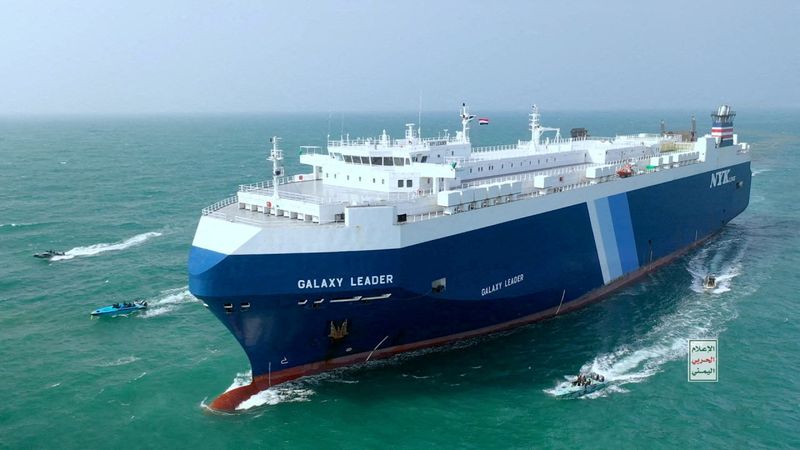(Reuters) – Global companies are dealing with rising supply logjams due to ongoing attacks by Iran-backed Yemeni Houthi militants in the Red Sea which have disrupted the flow of shipments through the key Suez Canal trade route.
Automakers Tesla , Geely-owned Volvo Car and Suzuki Motor said they were suspending some production in Europe due to a shortage of components in the first clear sign that the attacks are hitting manufacturers.
The United States and Britain launched a series of strikes on Yemen on Jan. 11 aimed at the Iran-backed Houthi militia. Container shipping prices have risen and companies are rerouting vessels via a much longer southern Africa route that adds about 10 days to shipping, about $1 million in fuel and could potentially create product shortages and delays.
Data from S&P Global showed the Suez Canal route accounts for 14.8% of all Europe and Middle East and North Africa (MENA) imports. Its analysis showed consumer goods, clothing and chemicals were among the sectors at most risk.
S&P Global analyses more than 300 industrial categories and over 6,000 products, and when assessing industrial and product exposure, it looks at the Suez route as a proportion of all freight in the region: a higher ratio implies fewer alternatives from other markets or transportation modes.
Here are some of the sectors exposed to the Suez Canal route:
Sector/product category Suez route shipments as a
proportion of all freight
imports to Europe/MENA
Consumer goods
Toys 47.0%
Household appliances 39.5%
Apparel 39.3%
Food
Palm oil 58.2%
Rice 51.4%
Tea 47.5%
Metals and
chemicals
Inorganic chemicals 24.2%
Organic chemicals 24.0%
Flat-rolled steel 22.3%
Manufactured steel products 20.9%
Utility
Power generating equipment 26.7%
Automotive
Road wheels 20.9%
Components for 67.2%
batteries
Lithium ion 65.9%
batteries
Brakes 48.1%
Drive axels 44.1%
Windshields 41.4%
Meanwhile, seaborne deliveries represented 55.1% of all shipments from Europe/MENA to Asia or Gulf destinations. But deliveries via the Suez Canal accounted for just 8.6% of all those imports.
Sector/product category Suez route shipments as a
proportion of all freight
imports to Asia/Gulf
Automotive
Passenger vehicles 41.3%
Motor vehicle parts 20.8%
Perishable food
items
Frozen pork 46.9%
Milk products 40.4%
Butter products 30.0%
Shelf-stable
consumer goods
Spirits 49.1%
Beer 44.7%
Cereal-based foods 36.0%
Perfumes, beauty products 24.0%
Source: S&P Global Market Intelligence
(This story has been refiled to remove extraneous text in the headline)
(Reporting by Deborah Sophia in Bengaluru; Editing by Krishna Chandra Eluri and Louise Heavens)
